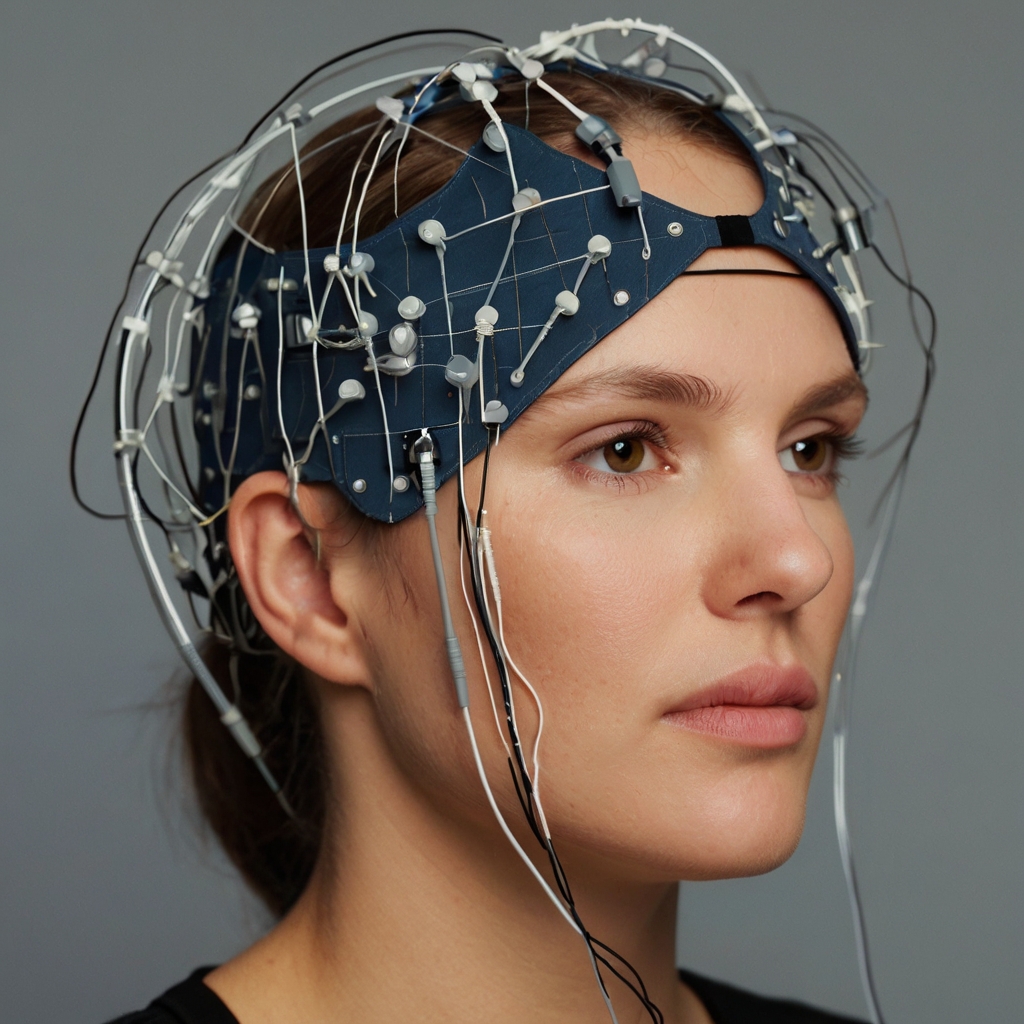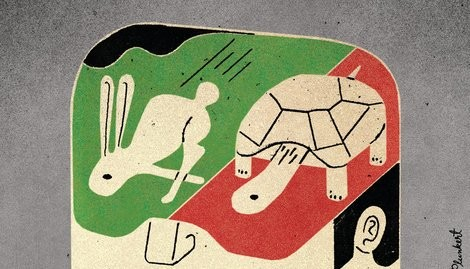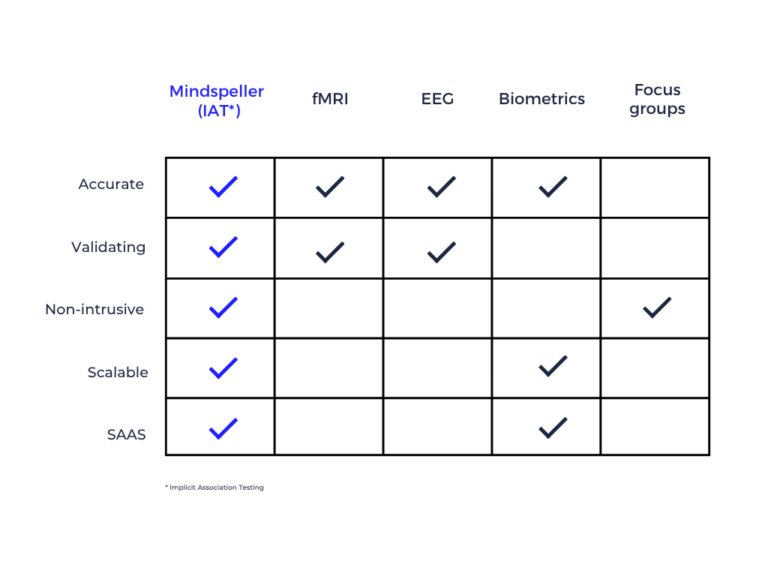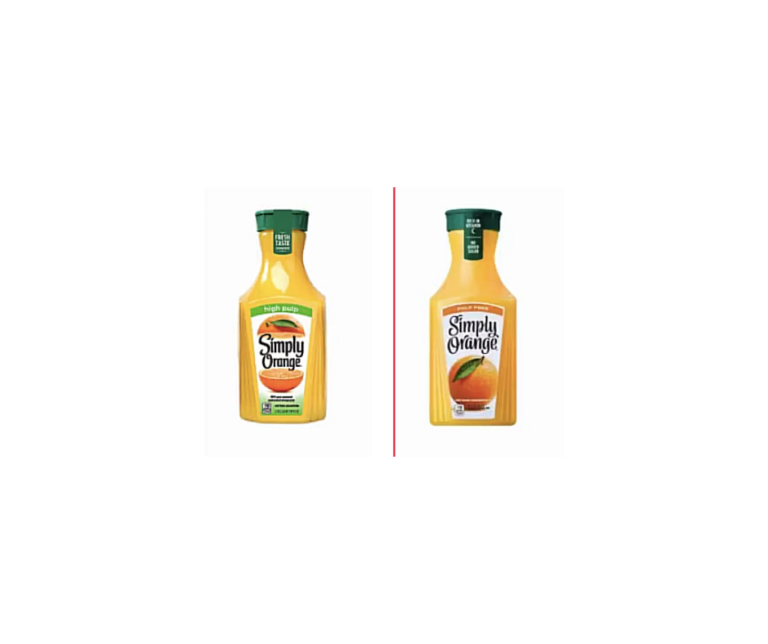Brand marketing with neuroscience
Brand marketing has a validation problem. Marketers are notorious for providing vanity metrics to please their superiors, but they don’t really know whether their actions contribute to brand growth.
Was the campaign on-message? Is the ad on-brand? Without testing assumptions, marketers can only guess.
Heat maps and other analytical tools provide data but offer little behavioral insight (we know what people did, but don’t know why). Surveys and focus groups are common ways to gauge consumer response to stimuli like ads or packaging, but these methods rely on conscious self-reporting, which can be biased and inaccurate.
People don’t think how they feel, they don’t say what they think and they don’t do what they say.
—David Ogilvy
Engagement and retention can be measured using scientific methods, but the existing tools are either cumbersome, expensive, or both.
EEG (electroencephalogram) involves placing caps with electrodes on people’s heads to measure electrical pulses in response to sensory stimuli. But the data requires professional interpretation, and scaling EEG testing is expensive and challenging (hundreds of people with caps on their heads may seem dystopian).

Effective, but
The most useful mind decoding sci-tech (as of 2024) is functional Magnetic Resonance Imaging. But fMRI has its own limitations. MRI scanners need to be operated by specialists; they can accommodate only one person at a time, and the costs prevent scale.
But there are more than a few ways to determine what people think about something. In his Nobel Prize-winning work, the late Daniel Kahneman described the thinking mind as two systems. System 1 is instinctive and intuitive (thinking fast); it’s in charge of mundane thought and deals with familiar circumstances. System 2 takes over when we’re faced with something outstanding that requires deeper thought and reflection (thinking slow). You’re using System 1 to respond to: how much is 2+2?, and System 2 to calculate 37×5=?
We tend to believe our decisions result from careful deliberation, but in reality, more than 95% of all decisions are the domain of the non-contemplative System 1, which forms decisions based on learned facts and stored information.

Thinking fast,
thinking slow
In a tale of science-inspired venture, a neuromarketing company called Mindspeller developed an enterprise research product inspired by Kahneman’s theory.
By registering respondents’ implicit associations (System 1 thinking) to visual or auditory stimuli and mapping out the data in a semantic association network (the collective subconscious), Mindspeller helps marketers understand how people perceive brands and how their actions shape perception.
Each concept, campaign, or creative assumption can be tested and validated with the accuracy of the more expensive methods for a fraction of the cost and fewer implementation complexities.

Competitive
comparison
I was tasked with formulating Mindspeller’s value proposition for one of its prospective clients—Coca-Cola. The food & beverage powerhouse was considering a facelift for one of its brands—Simply Juices. Their objective: reaffirm Simply’s positioning as THE healthy, clean, and natural juice brand.
Using Mindspeller’s competitive research tools, I compared the label of Simply’s main seller (Simply Orange) with one of the alternatives provided by CMA (the design agency that created the options).
Since the intended brand association was Fresh and Simple, I chose a label with a green outline and an image of a split-open orange in the center. The changes might seem trivial, but I guessed that the location and association of the orange communicated the intended message without disrupting the familiar brand image (Simply’s earned brand equity).

Which one is (more) on message?
To validate my hypothesis, I mapped Simply’s current label and the alternative on Mindspeller’s map of the implicit mind, and used three tools to test which option was closer to the intended message.
First, I used the A/B (split-testing) function to uncover which concept evoked a stronger association with the intended “natural” association. The result (on a scale of 0—weakest association, to 10—strongest association) was a score of 7.61 for the alternative version on the left, compared to a score of 6.86 for the current label on the right. (A delta above .20 is significant enough to be meaningful.)
The second tool I used was the Competitive Profiler, which highlights the first-order associations that set the options apart. The length of the bar represents the intensity of the mental connection with a specific word, relative to the asset on the other side. (The Competitive Profiler shows only associations with the most pronounced variations.) The results showed that the option on the right does not evoke strong associations, whereas the option on the left (the alternative) evokes a few strong ones.
In addition to the comparison, I ran both assets through Mindspeller’s Association Wheel, which shows people’s implicit associations with an asset. Here as well, the alternative asset evoked more relevant associations, although not by much.
Mindspeller’s SaaS tools reveal the relative location of an asset in our collective subconscious, exposing implicit associations and providing marketers with ways to measure the impact of their actions.
Every brand, picture, tagline, or sound can be tested, and every strategic hypothesis can be validated.
The era of guessing has ended, and the era of reliable insights at scale has begun. Mindspeller and other sci-tech companies adapted scientific advancements to help marketers understand consumer choices and….
shape the brand in the mind.
Share on:

